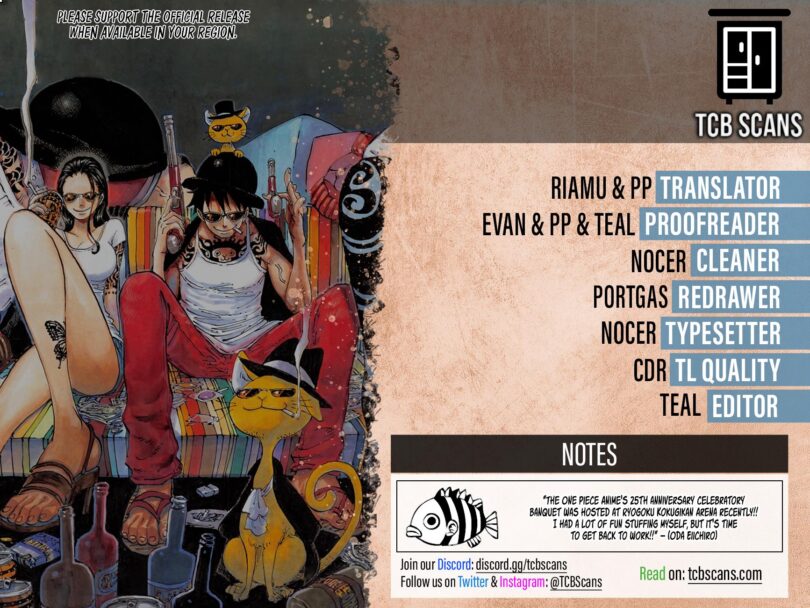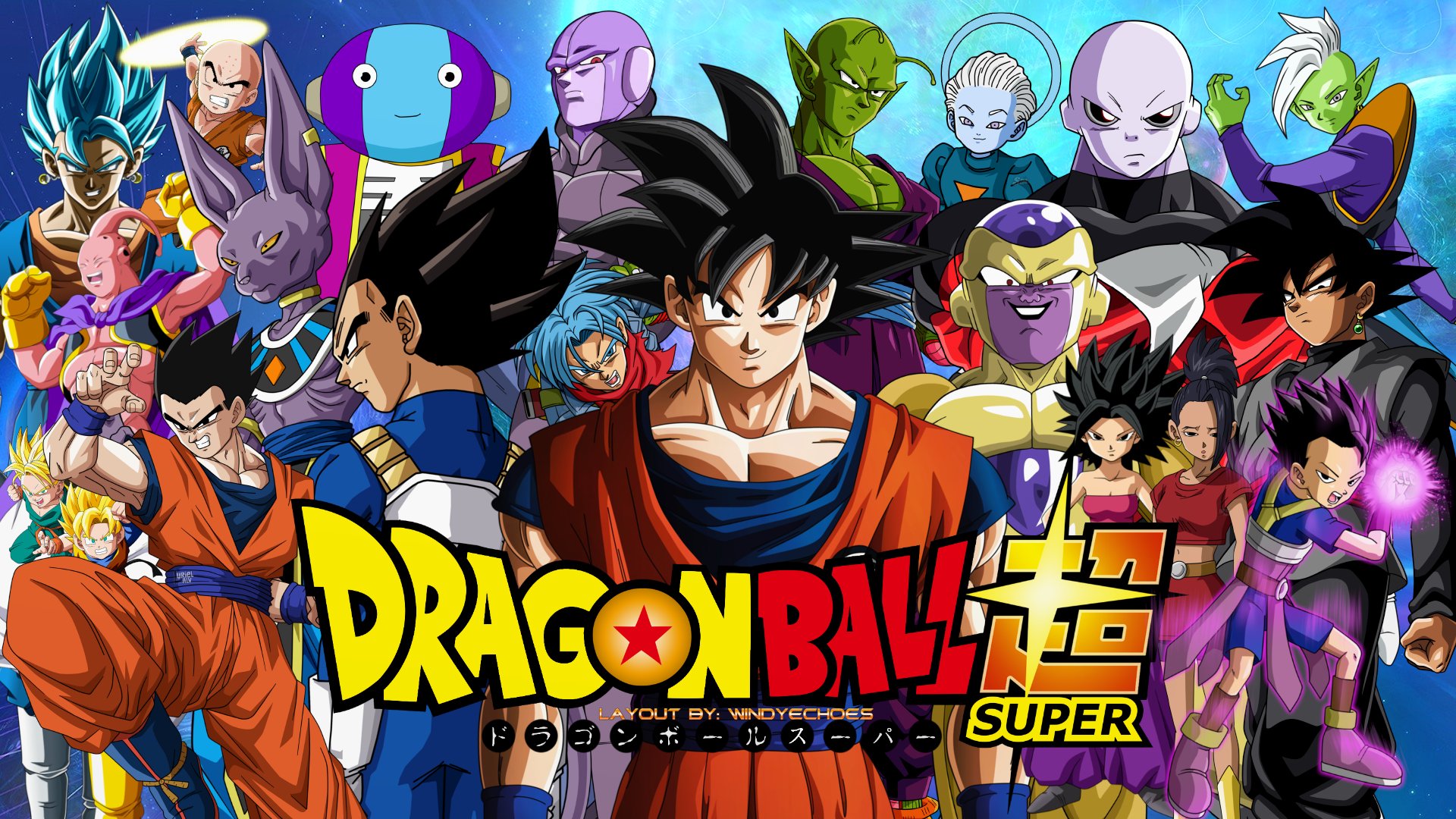In a world teeming with adventure and strife, the manga “One Piece” by Eiichiro Oda continues to captivate with its 1098th chapter titled “The Birth of Bonney.”
As the page turns, we’re greeted with the iconic “One Piece” logo, followed by a striking cover page featuring Brook, the Soul King, in a dynamic pose, playing his electric guitar with a shark leaping out of the water in the background, symbolizing his electrifying presence.
The story plunges us into a scene of chaos and urgency. The Revolutionary Army’s headquarters in Baltigo is distressed, with cries for backup echoing as the Toon uprising in the South Blue appears to be waning. The panels are heavy with the weight of battle, and the desperate call for help underscores the Revolutionary Army’s struggle against the expanding tides of revolution.
Suddenly, a commanding presence declares, “I’ll go.” A towering figure, Kuma is cautioned not to be rash as he has been acting recklessly since “that day.” The gravity of the situation is palpable, with the fate of a kidnapped comrade, Ginny, at stake, who has been captured by a Celestial Dragon.
The narrative shifts to jubilation as the revolutionaries celebrate a hard-fought victory. Three years of struggle have finally culminated in triumph. The Revolutionary Army is hailed as heroes of the people, their victory echoing the collective sigh of relief and triumph of the oppressed.
But the joy is short-lived. A heartbreaking revelation surfaces – Ginny, it seems, is on the brink of bidding farewell. Despite the distance, a connection is made through a phone call, a desperate plea from Ginny that suggests an impending finality. The shock is visible on the faces of her comrades – a mix of disbelief and sudden hope as they realize Ginny is alive.
Ginny’s voice crackles through the line as the moments unfold, a beacon in the darkness for her friends. She speaks of illness and abandonment, her tone bittersweet as she grapples with the reality of her situation. Her friends refuse to accept this ending, vowing to reach her instantly. Their determination is undeterred by the vastness of the seas that separate them.
The chapter closes with a sense of urgency, a race against time and fate. The revolutionaries are poised to defy the odds to save their friend, showcasing the unyielding spirit of camaraderie and resilience that “One Piece” is renowned for. It’s a testament to the enduring bonds that tie these characters together as they navigate the treacherous waters of their world.
As the story of “One Piece” continues, we delve deeper into a poignant scene filled with raw emotion and the harsh reality of sacrifice.
Amid destruction and despair, a character expresses a desire to rush to the side of a loved one named Ginny, who is revealed to be at death’s door. With labored breaths, they utter a heartfelt plea for Dragon, referred to as Big Bro, to look after their dear Kumachi, indicating deep bonds and a foreboding sense of farewell.
The scene cuts to the action as someone shouts for others to clear the way, their voice laced with urgency. There’s a collective push, a focus towards one goal, one place where Ginny might be. The cry “Kuma-san!” pierces the chaos, signifying a call to a familiar ally.
In a dramatic turn, we see a joyous yet heartbreaking revelation. Ginny, who appears to have transformed in some manner, joyfully exclaims a desire to marry Kumachi, her voice filled with a mixture of happiness and something more somber. The truth of her condition is revealed—her exposure to natural light has turned her skin blue and hard as stone, a physical manifestation of her sacrifice.
The narrative takes a tender turn as we discover Ginny’s sacrifice was fueled by love and the desire to ensure her baby’s safety. Her skin changed as she crossed the ocean to make it home, burning up her remaining time in the sun, a testament to her determination and maternal instinct.
In a church, a promise is made over Ginny’s swaddled form: “I swear… I’ll raise her well.” It’s a solemn vow to a life that Ginny fought so hard to protect. The grief is palpable as the speaker assures Ginny that she can now rest, her mission complete.
As the chapter progresses, we see life continue in the face of sorrow. A child, presumably Ginny’s, is seen hungry and, in a moment of joy, calling out, “Daddy!” It’s a bittersweet juxtaposition of new life and the continuation of love amidst the remnants of sacrifice.
The final panel is one of celebration. The community rejoices with music and laughter, honoring the life of Ginny and her child’s future. The scene is full of life, a stark contrast to the somber tone of Ginny’s sacrifice, showcasing the resilience of the human spirit and the power of community to find joy even after immense loss.
In the chaotic world of “One Piece,” the scene opens with a dramatic entrance. Kuma bursts into the frame, his presence commanding and intense. Panic and exertion are etched on the faces of those around him; the situation is critical.
The focus then shifts to a character who pleads, “Close the door,” their panting indicates a recent exertion or perhaps a sense of urgency to secure the space from some unseen threat. The question arises, “What in the world are you doing?!” as someone notices that all the church’s windows have been boarded up.
Attention is drawn to a blue stone, causing a stir among the onlookers. There’s confusion and concern; someone not familiar with the condition suggests it’s not white lead poisoning. The suggestion to take her outside is met with disbelief, “Are you insane?” pointing to the gravity of the situation. The gravity is further underlined by the revelation that Bonney has contracted the same disease her mother had.
The sense of duty and affection is palpable as the characters grapple with difficult decisions. “I owe you, Dragon,” one says, acknowledging a deep debt and needing to be by someone’s side. Another declares a decision to leave the Revolutionary Army, a significant choice that speaks volumes about their priorities.
A flashback to seven years prior shows Bonney as a child, at age five, in a moment of childhood playfulness and confrontation. She stands her ground against other children, displaying a fierce spirit and determination. The scene is lively, full of the energy and the innocent cruelty that can come with youth.
The narrative continues with a tender father-daughter interaction. Despite the earlier tension, the father reassures his daughter that their bond is clear and moving. There’s a playfulness to their exchange, even as they discuss the stones that have caused her ridicule, a shared moment of light-heartedness against the backdrop of a challenging reality.
The father’s love is clear as he dotes on his daughter, appreciating her unique qualities, even as others misunderstand her. They share a joke about her “jewels,” a term of endearment for what others have mocked, showing the depth of their relationship and the father’s unwavering support for his daughter in a world that doesn’t always understand her.
The adventure in the world of “One Piece” takes a more somber turn as a young girl named Bonney learns about the reality of her condition. Excited about the prospect of visiting mythical places like Sky Islands and Fishman Island, Bonney’s infectious enthusiasm is momentarily uplifted by the idea of celebrating her 10th birthday with a grand adventure.
Her father, attempting to maintain a sense of hope, plays along with the idea of going on these trips. But the underlying concern is clear as he carefully navigates the conversation, aware of the harsh truth that looms over them.
The condition that plagues Bonney, known as the “Sapphire Scale,” is revealed to be incurable by the current scientific understanding within the narrative. A doctor expresses a grim prognosis, suggesting that living to see her 10th birthday would be nothing short of a miracle. The despair is palpable as Bonney’s father grapples with the possibility of her not making it to her birthday, and the weight of his daughter’s condition becomes a heavy burden on his shoulders.
In an emotionally charged moment, Bonney overhears the conversation about her illness and the likelihood of her survival. Confronted with this devastating reality, she breaks down in tears, a powerful expression of her fear and the unfairness of her situation. Her father’s attempts to comfort her only underscore the tragedy of her illness and the limited time they might have left together.
The narrative cuts to a flashback of a younger Bonney, vividly displaying her fiery spirit even as a child, and then snaps back to the present with her father’s promise that she will be cured by her 10th birthday—a promise that seems more like a desperate assurance than a certainty.
The story concludes with a cliffhanger, alluding to a familiar nightmare that will descend upon the kingdom of Sorbet only a year later, hinting at further trials and tribulations for Bonney and her people. The chapter ends, leaving readers in suspense about what the future holds for Bonney and her father in the face of her life-threatening condition.



